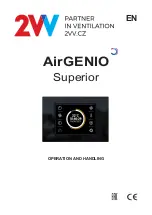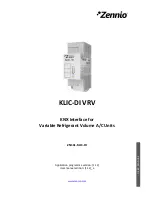
VP31
∗
5 Series
3 Port Solenoid Valve
Precautions 4
Be sure to read this before handling products.
Operating Environment
1. Do not use in an atmosphere containing
corrosive gases, chemicals, sea water, water,
water steam, or where there is direct contact
with any of these.
2. Do not use in an environment where
flammable gas or explosive gas exists. Usage
may cause a fire or explosion. The products
do not have an explosion proof construction.
3. Do not use in a place subject to heavy
vibration and/or shock.
4. The valve should not be exposed to prolonged
sunlight. Use a protective cover. Note that the
valve is not for outdoor use.
5. Remove any sources of excessive heat.
6. If it is used in an environment where there is
possible contact with a waterdrop, oil, weld
spatter, etc., exercise preventive measures.
7. When the solenoid valve is mounted in a
control panel or it’s energized for a long
period of time, make sure the ambient
temperature is within the specifications of the
valve.
1. Temperature of ambient environment
Use the valve within the range of the ambient temperature
specification of each valve. In addition, pay attention when
using the valve in environments where the temperature
changes drastically.
2. Humidity of ambient environment
● When using the valve in environments with low humidity,
take measures to prevent static.
● If the humidity rises, take measures to prevent the adhesion
of water droplets on the valve.
Maintenance
1. Perform maintenance and inspection
according to the procedures indicated in the
operation manual.
If handled improperly, human injury and/or malfunction or
damage of machinery and equipment may occur.
2. Removal of equipment, and supply/exhaust of
compressed air
Before components are removed, first confirm that measures
are in place to prevent workpieces from dropping, run-away
equipment, etc. Then, cut off the supply air and electric power,
and exhaust all air pressure from the system using the
residual pressure release function.
When the equipment is operated after remounting or
replacement, first confirm that measures are in place to
prevent the lurching of actuators, etc. Then, confirm that the
equipment is operating normally.
3. Low-frequency operation
Valves should be operated at least once every 30 days to
prevent malfunction. (Use caution regarding the air supply.)
4. Manual override
When a manual override is operated, connected
equipment will be actuated.
Operate only after safety is confirmed.
5. If the volume of air leakage increases or the
valve does not operate normally, do not use
the valve.
Perform periodic maintenance on the valve to
confirm the operating condition and check for
any air leakage.
1. Drain flushing
Remove drainage from the air filters regularly.
- 7 -
No.VP3145-OMM0002-B

































